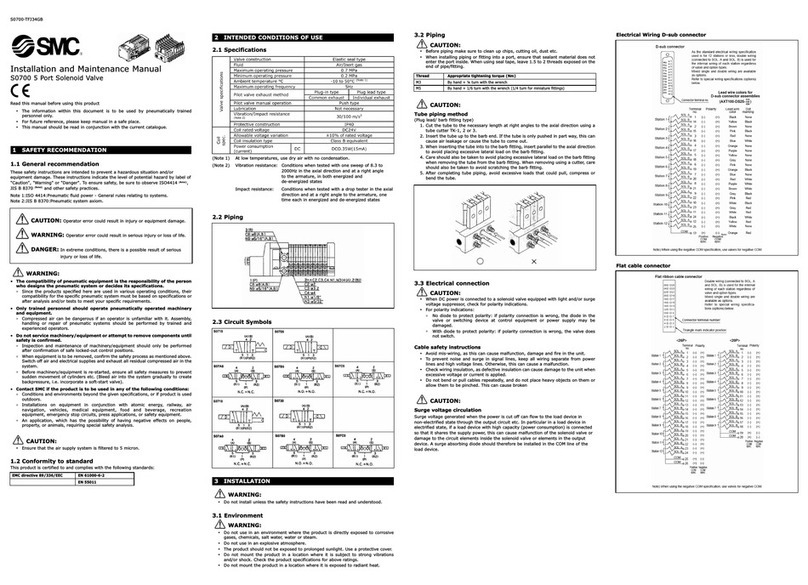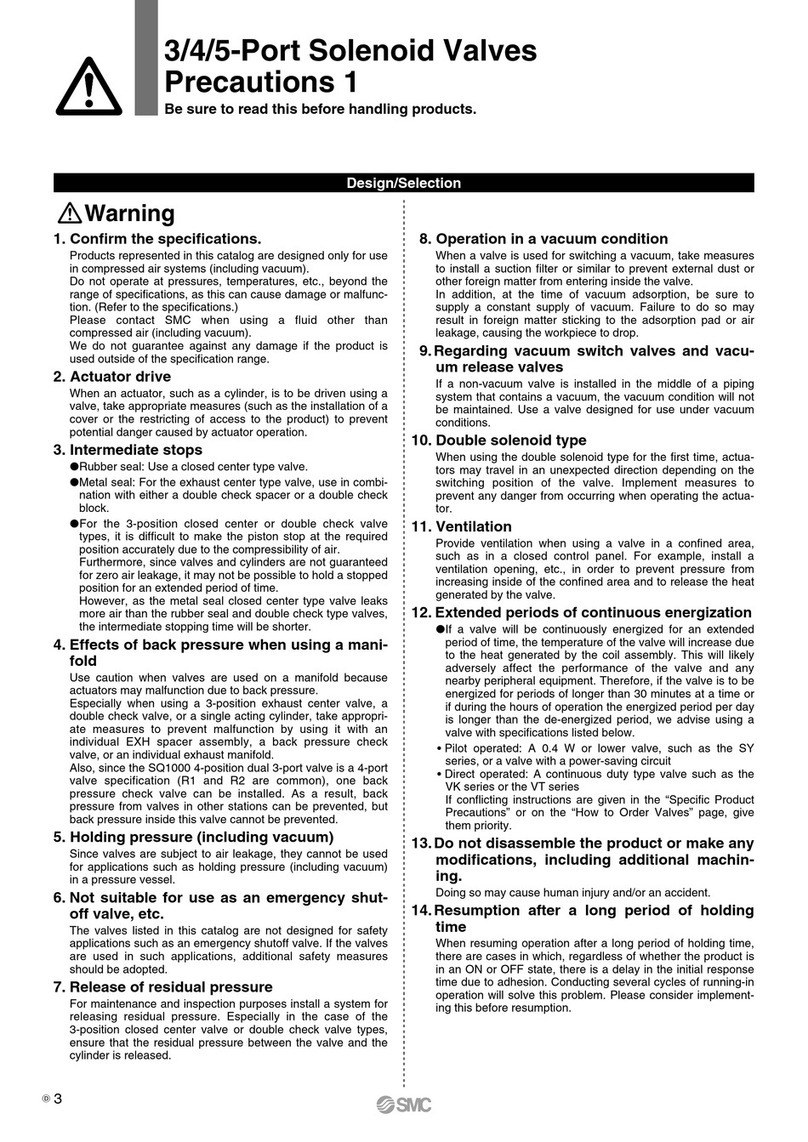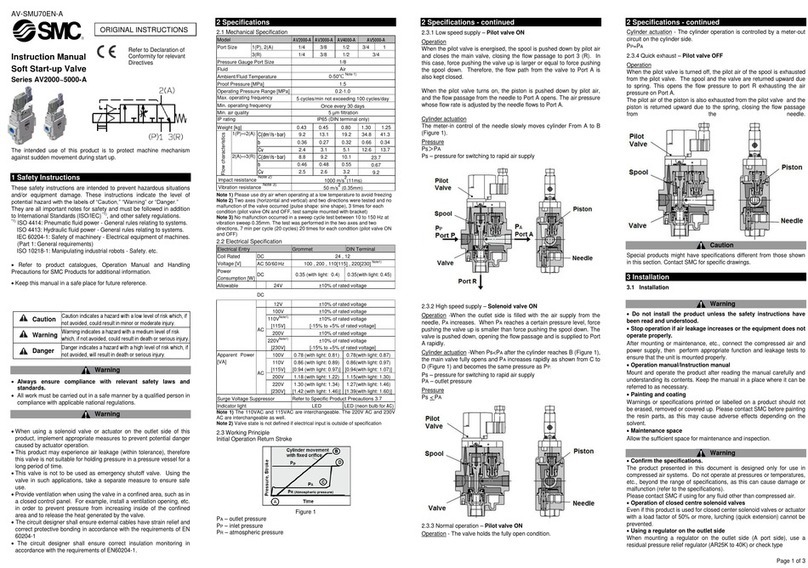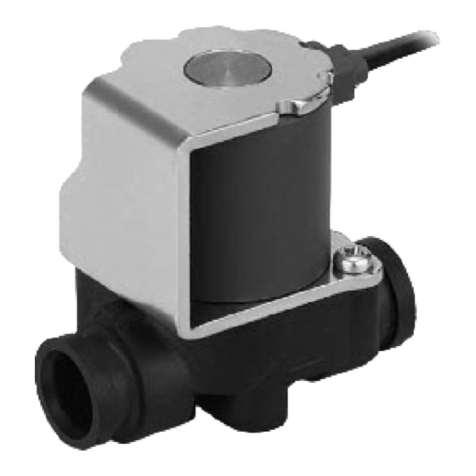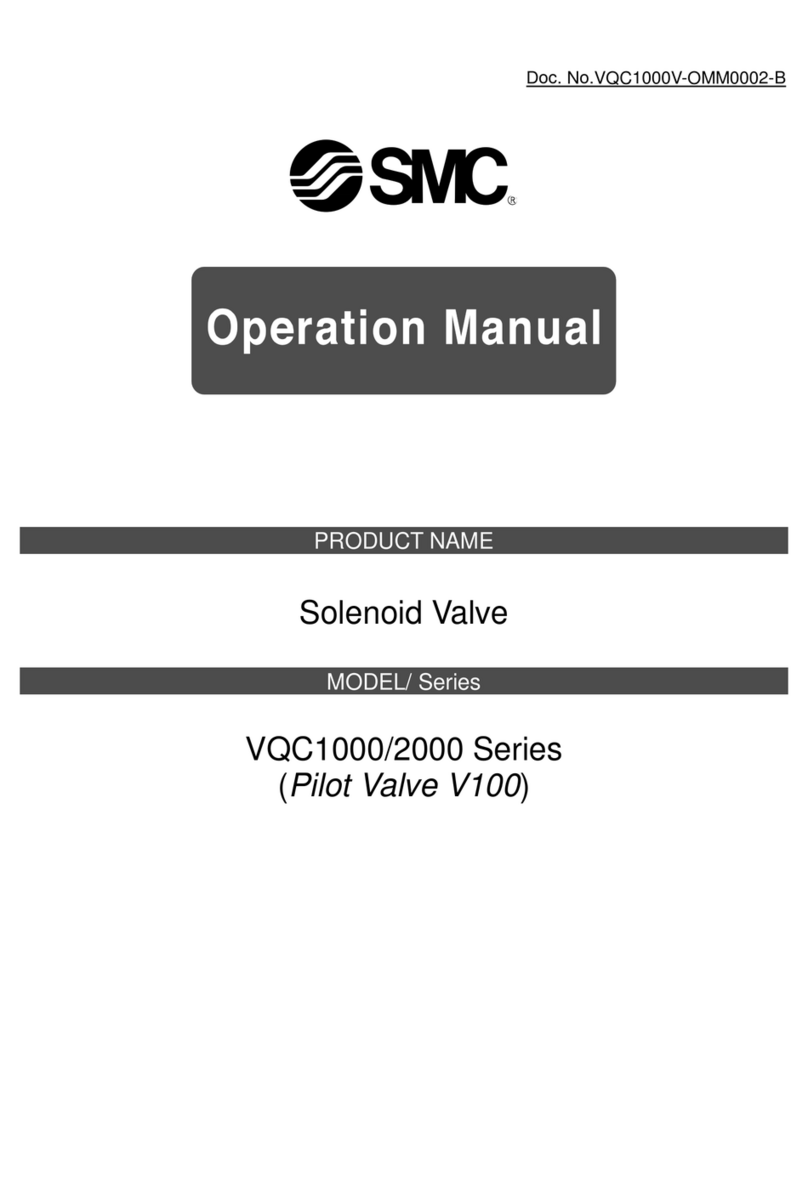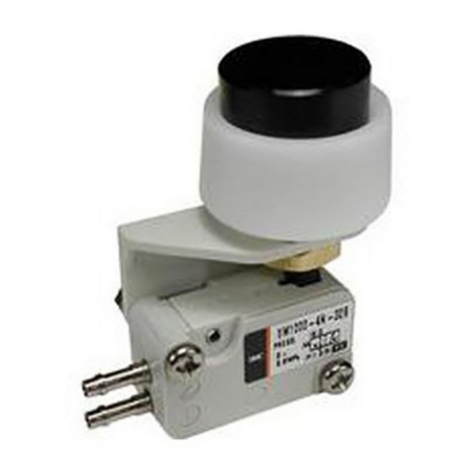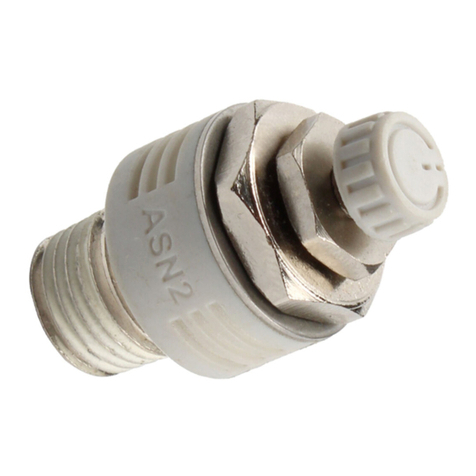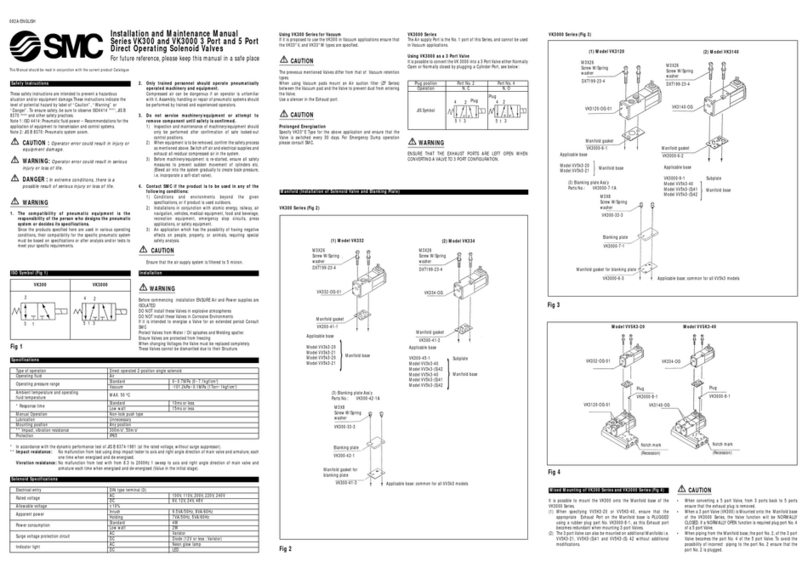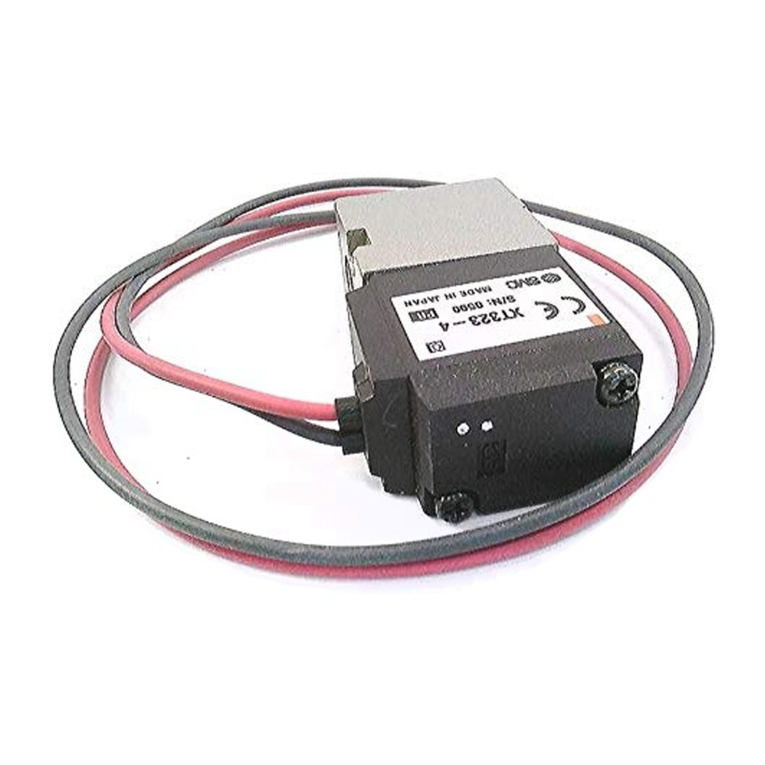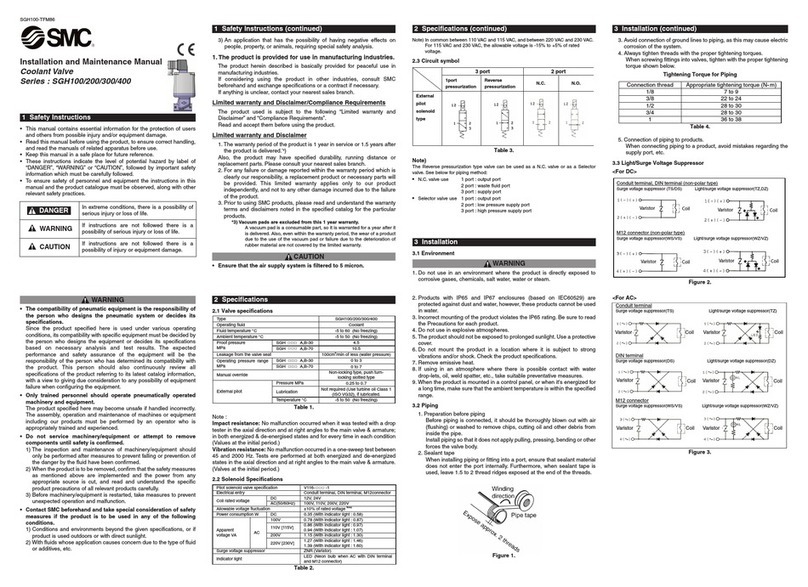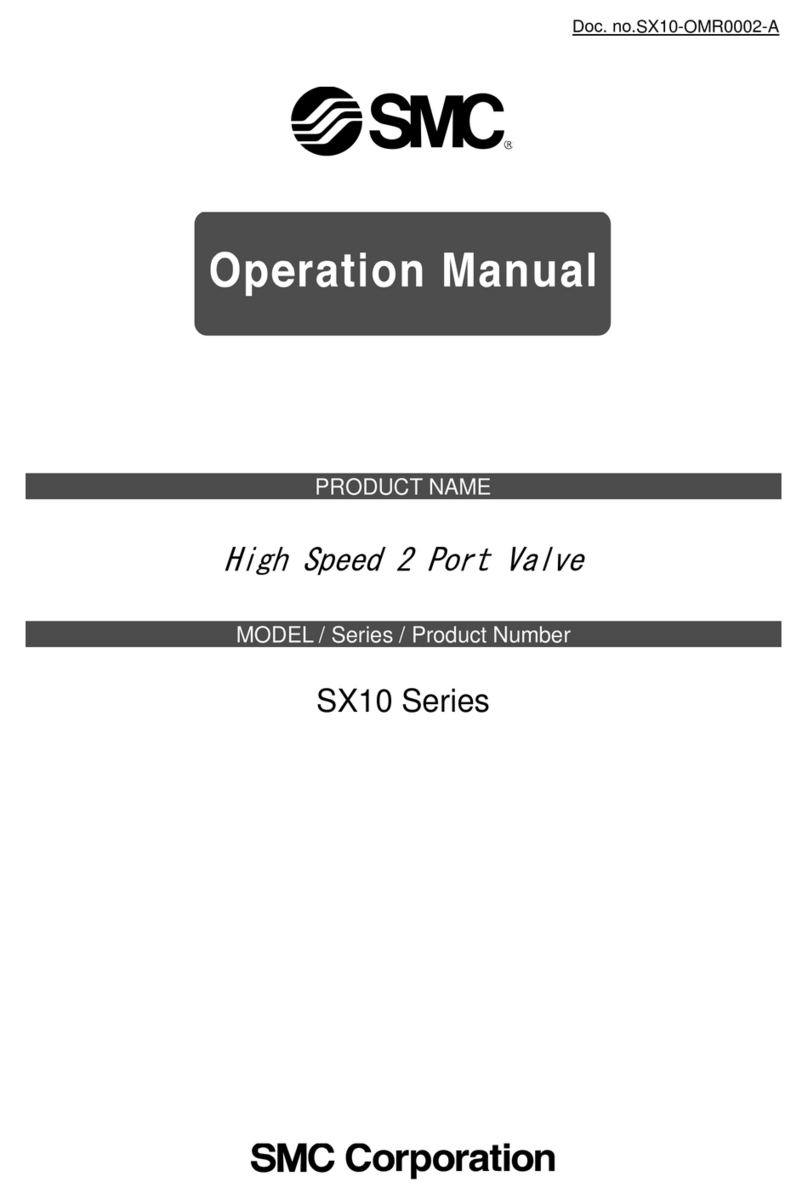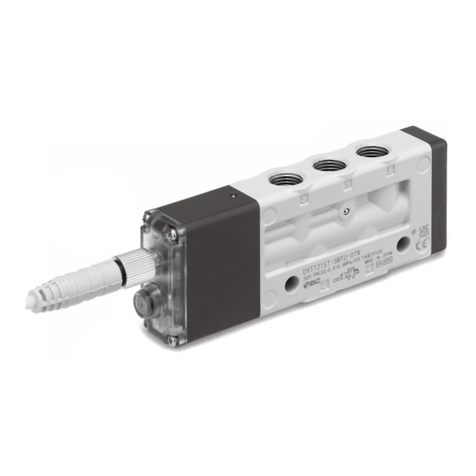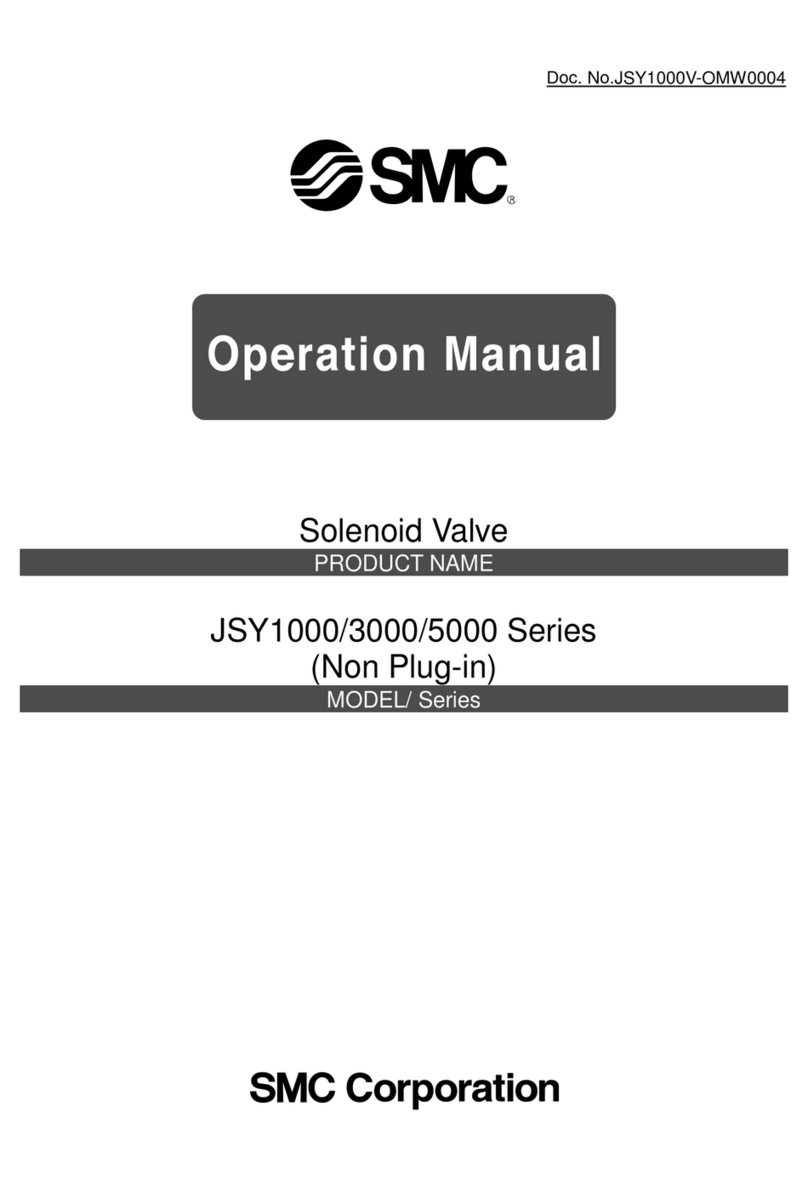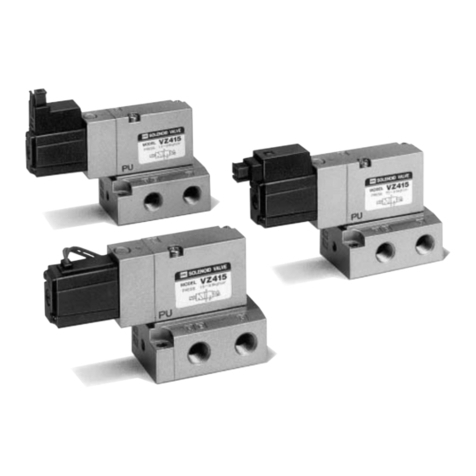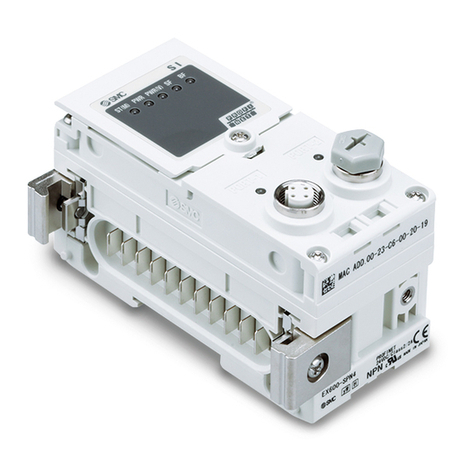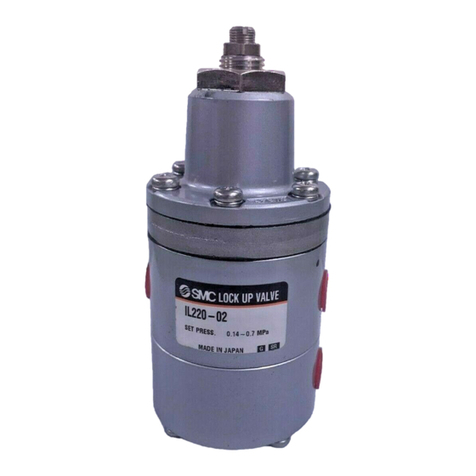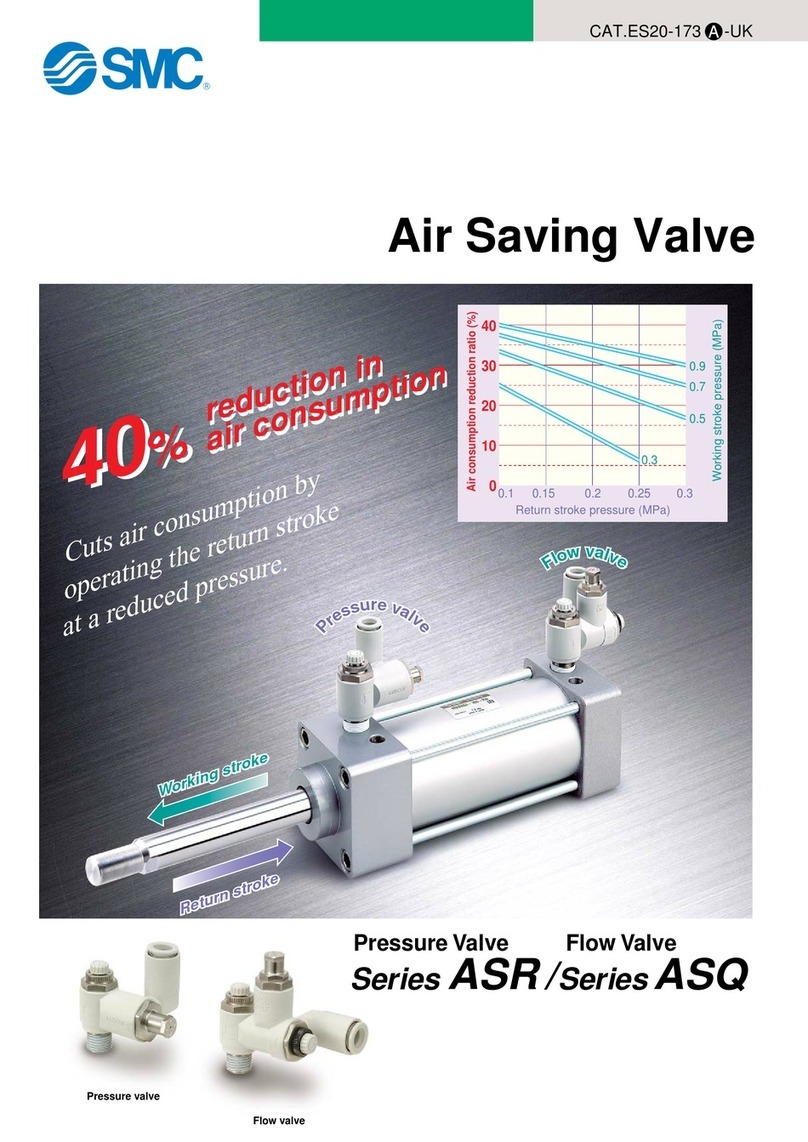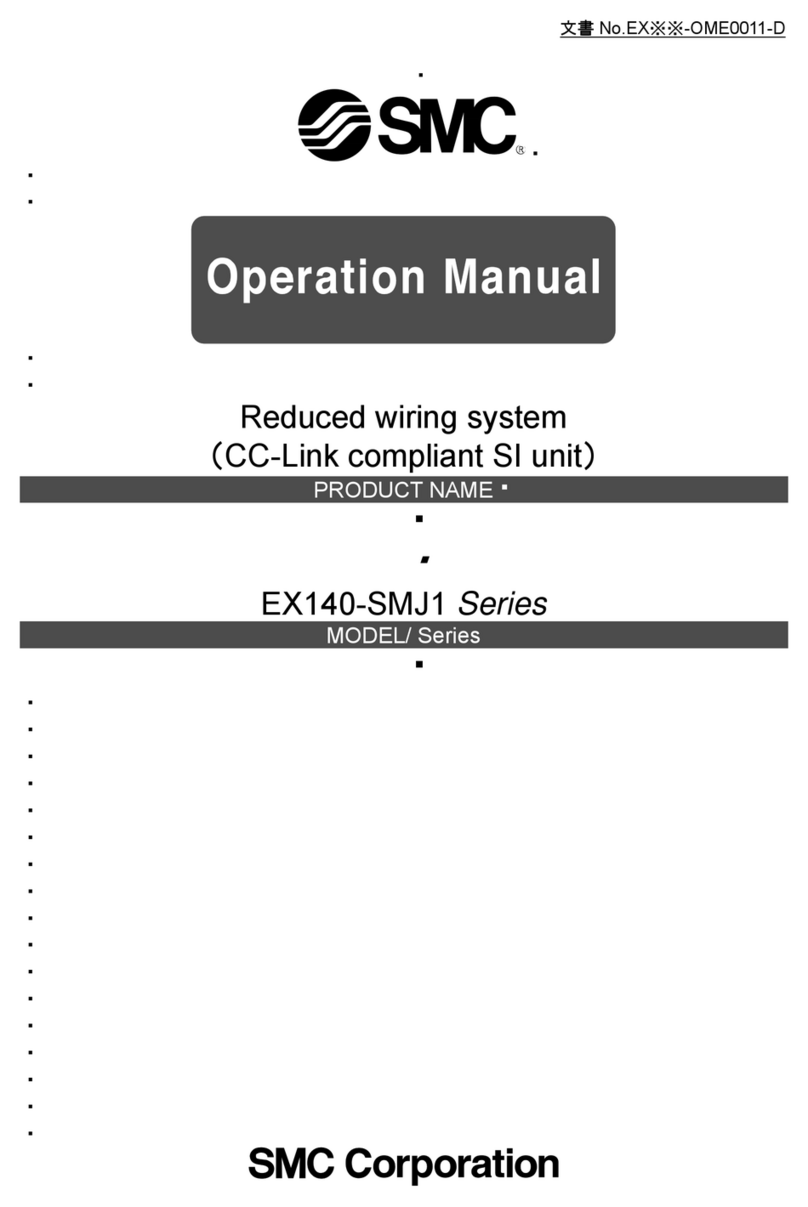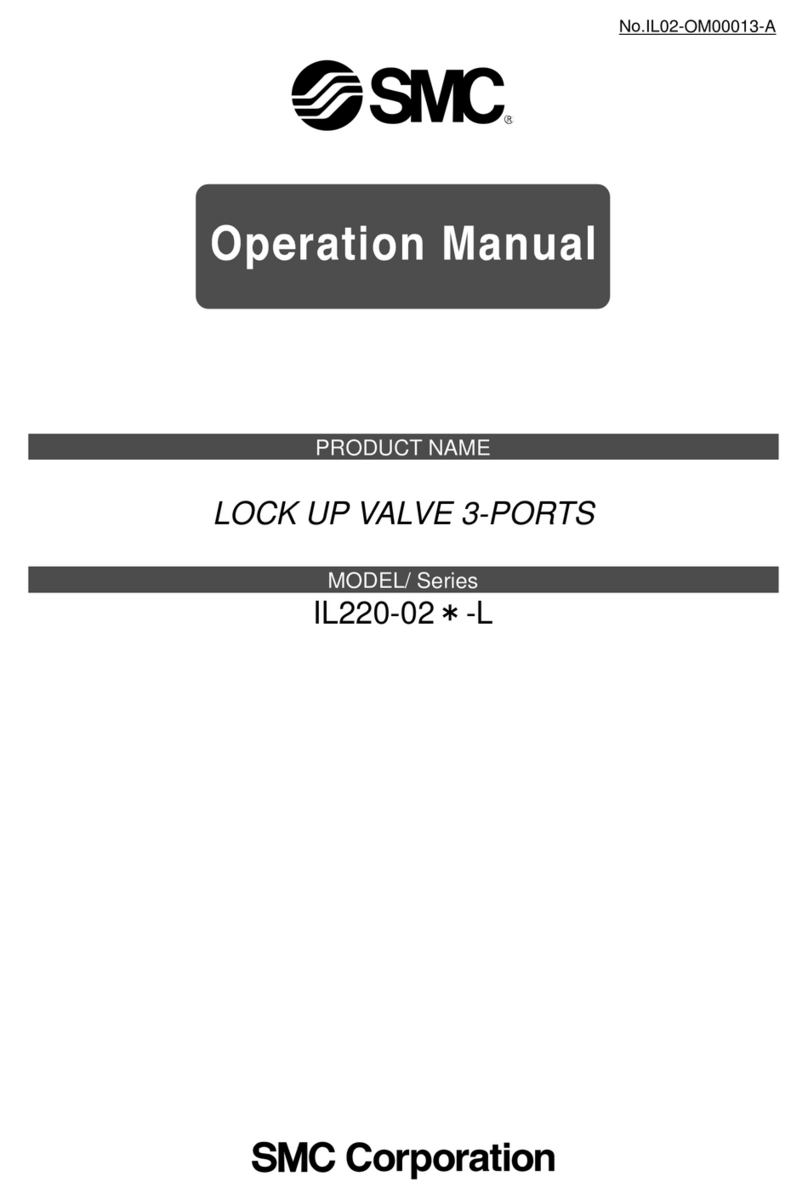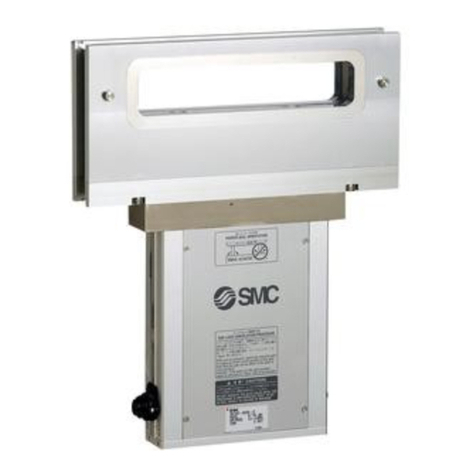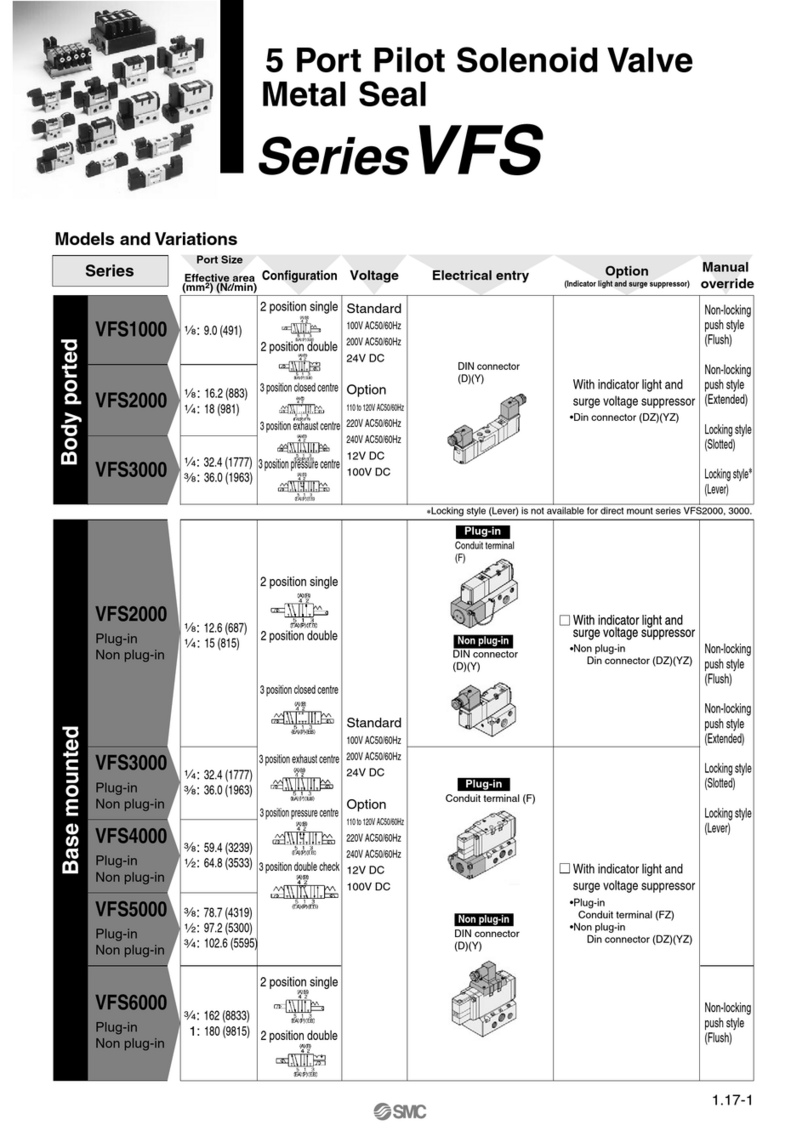
1. Preparation before piping
Before piping is connected, it should be thoroughly blown out
with air (flushing) or washed to remove chips, cutting oil and
other debris from inside the pipe.
2. Wrapping of pipe tape
When screwing piping or
fittings into ports, ensure that
chips from the pipe threads or
sealing material do not enter
the piping. Also, if pipe tape is
used, leave 1 thread ridges
exposed at the end of the
threads.
3. Connection of fittings
When screwing fittings into valves, tighten as follows.
Tightening Torque for Piping
Connection thread size (R, NPT)
Proper tightening torque (N·m)
Follow the procedure of the manufacturer when fittings other than
SMC is used.
1) If the fitting is tightened with excessive torque, a large amount
of sealant will seep out. Remove the excess sealant.
2) Insufficient tightening may cause seal failure or loosen the
threads.
3) For reuse
(1) Normally, fittings with a sealant can be reused up to 2 to 3
times.
(2) To prevent air leakage through the sealant, remove any
loose sealant stuck to the fitting by blowing air over the
threaded portion.
(3) If the sealant no longer provides effective sealing, wind
sealing tape over the sealant before reusing. Do not use any
form of sealant other than the tape type of sealant.
(4) Once the fitting has been tightened, backing it out to its
original position often causes the sealant to become
defective. Air leakage will occur.
4. Uni thread fittings
1) First, tighten the threaded portion by hand, then use a suitable
wrench to tighten the hexagonal portion of the body further at
wrench tightening angle shown below. For the reference value
for the tightening torque, refer to the table below.
Connection Female Thread: Rc, NPT, NPTF
Uni thread size
after tightened by hand
Tightening torque
(N·m)
Connection Female Thread: G
Uni thread size
after tightened by hand
Tightening torque
(N·m)
2) The gasket can be reused up to 6 to 10 times. It can be
replaced easily when it has sustained damage. Abroken gasket
can be removed by holding it and then turning it in the same
direction as loosening the thread. If the gasket is difficult to
remove, cut it with nippers, etc. In such a case, use caution not
to scratch the seat face because the seat face of the fitting’s
45° gasket is the sealing face.
5. Piping to products
When piping to a product, refer to the operation manual to
avoid mistakes regarding the supply port, etc.
This is a valve which requires lubrication. Be
sure to lubricate it for operation.
It may cause problems such as damage and
malfunction of the valve if it is not lubricated.
A valve of vacuum specification needs overhaul
for cleaning and addition of grease because it
cannot be lubricated without it. (Refer to page 8.)
1) If a lubricant is used in the system, use class 1 turbine oil (no
additive), ISO VG32.
2) Please contact SMC regarding class 2 turbine oil (with
additives), ISO VG32.
Lubrication amount
If too much oil is supplied, the oil will be accumulated in the
product, causing malfunction or response delay.
1. Use clean air.
Do not use compressed air that contains chemicals, synthetic
oils including organic solvents, salt or corrosive gases, etc., as
it can cause damage or malfunction.
1. Install an air filter.
Install an air filter upstream near the valve. Select an air filter
with a filtration size of 5 ㎛or smaller.
2. Take measures to ensure air quality, such as by
installing an aftercooler, air dryer, or water
separator.
Compressed air that contains a large amount of drainage can
cause malfunction of pneumatic equipment such as valves.
Therefore, take appropriate measures to ensure air quality,
such as by providing an aftercooler, air dryer, or water
separator.
VPA31
5 Series
Precautions for 3 Port Air Operated Valve
Be sure to read before handling.
- 5 - VP3145-OMH0005-D
